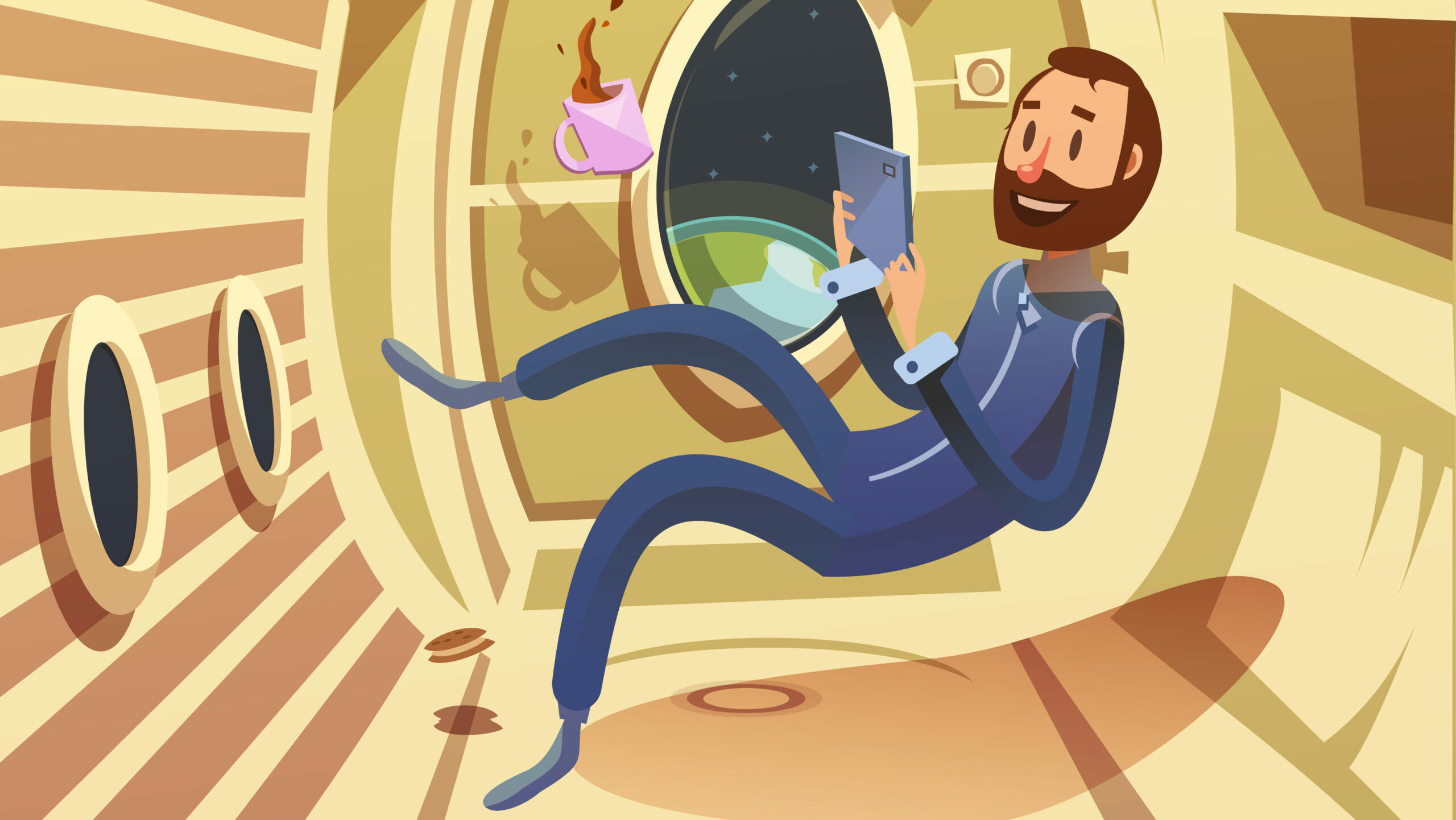Reading Time – 8 Minutes, Difficulty Level 1/5
In the simplest terms a system is a collection of components that interact with one another, & they surround & influence our lives whether we realise it or not. From organ systems to ecosystems, supply chains & financial markets, mechanisms, infrastructure & software, communities & social circles. Many systems are fractal in nature, being made up of systems within systems of varying scale. Despite their incredible variety, systems are governed by a universal set of principles that define their properties, as well as allowing us to predict how future changes might unfold.
Couplings and Feedback Loops
An interaction between two components within a system is called a coupling, & couplings facilitate the flow of energy or resources from one component to another. Couplings can be either positive or negative. Positive couplings mean that a change to one component results in an equivalent change in the other. For example, when your body temperature increases, the rate of sweating increases in kind. Negative couplings have the opposite effect, where a change in one component creates an inverse effect in another. As you sweat more, your body temperature declines.
Sometimes the couplings between components affect one another in a circuit, creating a feedback loop, which again can be positive or negative. If a feedback loop contains a negative coupling, it is a negative feedback loop, Negative feedback loops are effective at dampening disturbances within systems, allowing them to return to their equilibrium state (which we will explore in more detail shortly). When your body temperature increases, you sweat more, which reduces your body temperature, thus reducing your sweating.
Positive feedback loops however contain only positive couplings. As one component changes, it fuels equivalent change in the second component, which in-turn pushes further change in the first component & so on. As a result, disruptive positive feedback loops can amplify disturbances in systems, causing them to spiral beyond the boundaries of their equilibrium state. One such positive feedback loop can be seen in Arctic methane emissions. Frozen soils in the high Arctic, known as permafrost, containing methane gas are defrosting as a result of rising global temperatures. Methane is a highly potent greenhouse gas, so as it thaws & is released into the atmosphere, it will increase the rate of heating, causing more thawing of permafrost & further release of methane.

Illustration of the different types of couplings & feedback loops. Pointed arrow indicates positive flow, while a circle indicates negative (reverse effect) flow.
Equilibrium States and Tipping Points
Systems strive to exist in equilibrium states; a condition in which the components & their couplings are maintained & do not change, unless some outside disturbance is applied. Equilibrium states can be stable or unstable.
A stable equilibrium state is one which is able to absorb disturbances & return to its equilibrium state with ease. For example, in a wild ecosystem where a predator feeds on multiple species of prey animal, if one prey species’ population declines or goes extinct, the predator has enough options that it can modify its feeding habits to stay alive. Stable equilibriums require large, high energy disturbances to take them beyond their boundaries for recovery, known as tipping points.
Unstable equilibriums, as you might expect, exist in a tenuous condition where even minor disturbances can push them over their tipping points from one equilibrium state into a new, different one. If our hypothetical predator depends on a single prey species, & that species goes extinct, the predator will be doomed to starvation, causing its associated food chain & ecosystem to change. As a result of their liability to break down, unstable equilibrium systems tend to be short lived when compared to stable equilibriums, unless a great amount of energy or resources is used to maintain that state.

Green lines = herbivorous flow, red lines = carnivorous flow. In a flourishing ecosystem, multiple species engage in various interactions with one another, creating a stable equilibrium state.
When pushed past their tipping points, systems can fall into a new equilibrium state that is fundamentally different. It can take a long time for a new equilibrium to be achieved as components & couplings are formed, & any attempt to return a system to its original state can require a huge input of energy, possibly even more than it took to tip them over the edge.
The 2008 financial crisis is a prime example of an unstable equilibrium falling past a tipping point, with high house prices, high risk loans & excessive risk-taking by investors leading to the so-called bursting of the housing bubble. Trillions of dollars worth of bailouts, loans & asset purchases were required to prevent a global economic collapse.
Resilience
The ability of a system to absorb disturbances & maintain its equilibrium state is known as its resilience, & is dependent on a number of key factors.
Modularity; the degree to which a system is divided up & separated between components & couplings. A system made up of many different components with weak couplings will have higher resilience than a system with fewer components that are strongly dependent on one another. To give a simple example; a business that divides the workload between many employees will be more resilient than one where the workload is concentrated with very few.
Circuit breakers; a system’s ability to sever couplings to isolate disturbances & stop them spreading to other components. The fuses in an electrical framework from which they derive their name are a perfect example, but so is a quarantine procedure during a disease outbreak, containing the spread of a pathogen.
Redundancy; the excess capacity of a system. This could be an energy supply, a material resource, revenue stream etc. depending on the nature of the system. Having a leftover reserve of a particular resource means that should a disturbance disrupt the usual supply, there will be a stock that can be drawn upon, which will give the system time to return to its equilibrium state. If a drought strikes a farming community, a well-stocked reserve of food will allow them to survive until the rains return.
Backups; secondary components, or even entire additional systems, with the capacity to carry the load of primary components or systems should they fail. These can also be a lifeline to give a system a chance to return to its equilibrium state. A replacement bus service during a disruption to trains keeps the passengers moving.

A diagram illustrating the various components & couplings that make up the supply chain required for someone to buy a laptop. Andreas Wieland, CC BY-SA 3.0
The basic principles of system theory can be applied to a huge variety of systems, be they natural or manmade, physical or immaterial, & by examining their components we can make an assessment of a system’s resilience & make predictions about future change. Increasingly climate change & habitat destruction is pushing many ecosystems towards their tipping points. The extinction of keystone species & the clearing & simplifying of habitats decreases the ecosystem’s resilience, making it more susceptible to disturbances from adverse weather conditions & climatic anomalies. Forests for example, with many species of trees & understory plants, are an effective barrier for soaking up rainwater, but when turned into open monoculture for grazing or crops, rain is more likely to saturate the soil, wash off the surface & cause flooding.
Ecosystems are themselves components within the larger earth system, which is also made up of ocean currents, weather systems, water, rock & nutrient cycles, which together form the foundation of our liveable planet, & are deeply interconnected though both biological & inorganic processes.

In March 2021, the container ship Ever Given became stuck in the Suez Canal for six days, preventing passage for over 300 ships. The halting of this crucial shipping lane caused global shortages in food & manufactured goods, & is estimated to have cost roughly $400 million an hour.
Curiously many man-made systems break the mould in that the forces that manage them deliberately, if unintentionally, strive for unstable equilibrium states with low resilience. Pursuit of profit & efficiency sometimes means consolidating departments & workloads, streamlining distribution & delivery networks, & buyouts of smaller organisations by larger ones. This reduction in modularity & elimination of redundancy means a decline in resilience, making such organisations & administrations more prone to breaching their tipping points.
During the height of the COVID-19 pandemic, insufficient reserves of personal protective equipment combined with the sudden closure of manufacturing, increased demand & restrictions on transport, which led to a rapid & disastrous shortage of masks & other essential medical supplies. The ‘just-in-time’ model of supply chains might be effective in its ability to efficiently deliver profits & services, but when viewed through the lens of system theory it has the potential to cause chaos when hit with unexpected disturbances.
Further Reading
Sean Harapko – How COVID-19 impacted supply chains & what comes next
https://www.ey.com/en_gl/supply-chain/how-covid-19-impacted-supply-chains-and-what-comes-next
UCAR Centre For Earth Education – Understanding Earth as a system
https://scied.ucar.edu/learning-zone/earth-system/understanding-earth-as-system
Muhammad Raza – Resiliency vs Redundancy: What’s the difference?
https://www.bmc.com/blogs/resiliency-vs-redundancy/
A lifelong natural history enthusiast, Dane has built an online following recreating prehistoric life through animation, & is now studying for a Natural Sciences degree while participating in STEM ambassadorship & climate activism.








